Rusty Crayfish and Marbled Crayfish
Table of contents:
- Aquatic invaders
- Pathways of invasion
- Threats to the environment, the economy and society
- Focus on an invader
- What you can do
Aquatic invasive species in Quebec
Rusty Crayfish
(Faxonius rusticus)
Photo credit: Doug Watkinson, Fisheries and Oceans Canada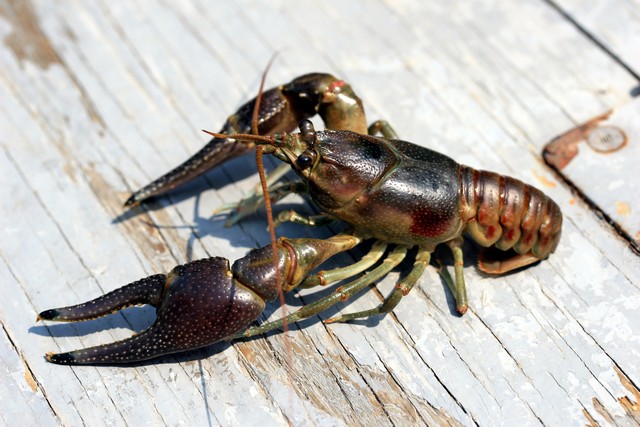
Characteristics
- between 7.5 cm and 13 cm
- black bands at the tips of the claws and oval gap when closed
- rusty patches on each side of the shell (near the tail)
- colour of the shell varies between a grey-blue and a dark brown-greenish
Photo credit: Doug Watkinson, Fisheries and Oceans Canada
Origin
The Rusty Crayfish is a freshwater crustacean that resembles a small lobster and belongs to the order Decapoda (10 legs). This invasive species is from the Ohio River basin in the United States. It is believed to have been spread by either live-bait for recreational fishing or the aquarium trade. It was first observed in Ontario in the early 1960s. In Quebec, it was only present in the Outaouais region up to the early 2000s. It has since then been observed also in Montérégie.
Habitat
Due to its ability to adapt to weak or strong currents, the Rusty Crayfish can live in ponds, streams, and lakes as well as in rivers. It prefers bottoms strewn with rocks, gravel and objects that form shelters. It can also be seen on sandy or loamy bottoms and in areas covered with aquatic plants. This species can tolerate a large range of temperature (0°C to 39°C).
Similar species
Several species of crayfish look alike, and it is easy to confuse the Rusty Crayfish with native crayfish species. It particularly resembles two crayfish, the Virile Crayfish (Faxonius virilis) and the Northern Clearwater Crayfish (Faxonius propinquus). Besides the rusty patches on its body, the Rusty Crayfish is larger than the others and its claws have black tips.
Virile Crayfish
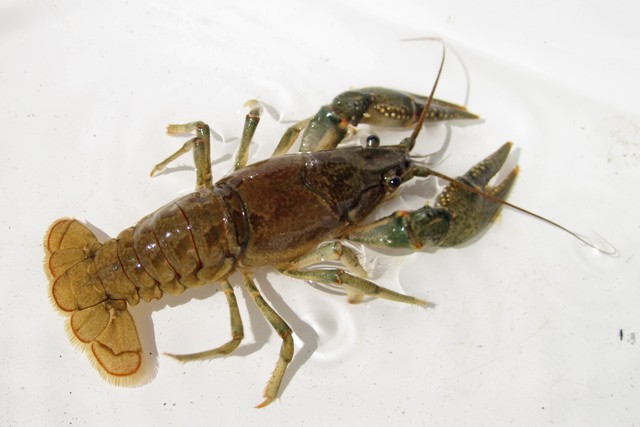
Photo credit: Larry Clarfeld
Marbled Crayfish
(Procambarus virginalis)
Photo credit: C. Chucholl 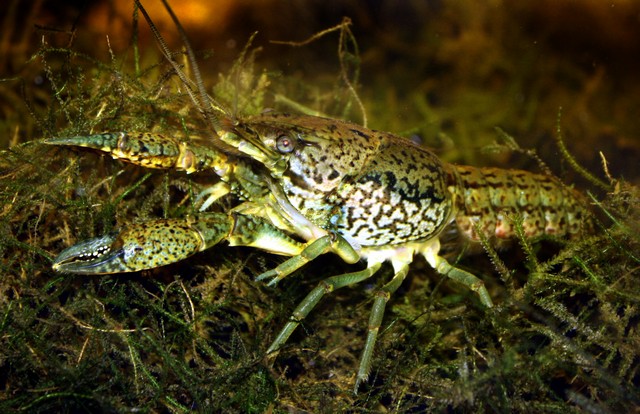
Characteristics
- generally less than 10 cm, can be up to 13 cm
- narrow pincers, like claws
- brown or green mottling on the shell, darker on wild individuals and lighter on captive individuals
Photo credit: Klaus Rudloff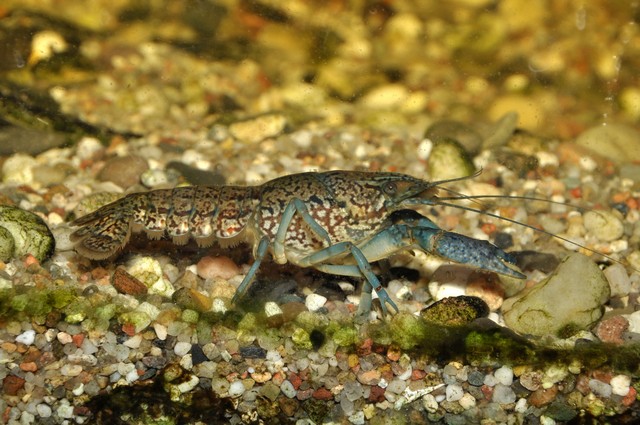
Origin
The Marbled Crayfish, also known as Marmorkreb, is a freshwater crustacean that resembles a small lobster. It belongs to the order Decapoda (10 legs). It is thought to have originated from captive breeding. Therefore, it is not indigenous to any territory. First reported in 1995, it was introduced voluntarily to Madagascar for food. It is now found in several European countries and Japan. Although wild Marbled Crayfish have not yet been seen in North America, it is a concern because it is presently available for sale (food, live bait and aquarium trade).
Habitat
Due to its ability to adapt to weak or strong currents, the Marbled Crayfish can live in ponds, streams, and lakes as well as in rivers. Optimal water temperature for this species is around 20°C, but the species has now adapted to the cooler waters of temperate zones. During a drought, it can also survive out of water for up to 3 days.
Similar species
It is easy to confuse the Marbled Crayfish with native species such as the Spinycheek Crayfish (Faxonius limosus). However, the mottling on the carapace of the Marbled Crayfish can be used to distinguish it from native crayfish. It also resembles the Calico Crayfish (Faxonius immunis), a crayfish native to Ontario, but introduced to Quebec.
Spinycheek Crayfish
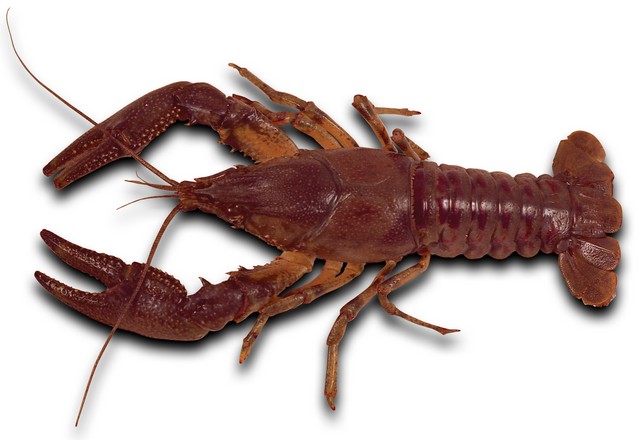
Crédit photo : Ministère de l'Agriculture, des Pêcheries et de l'Alimentation du Québec
- Date modified: